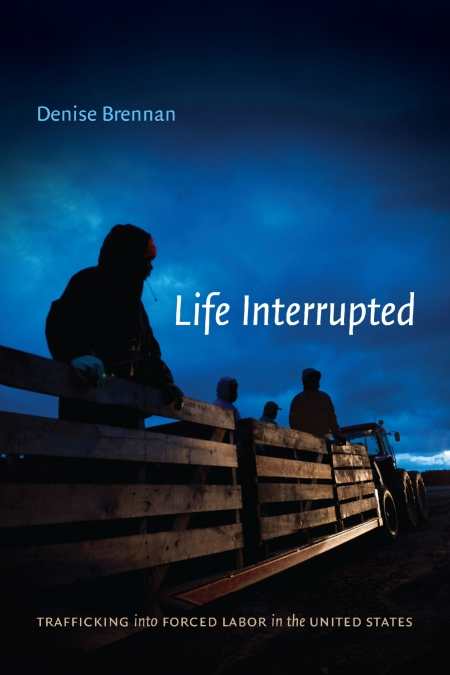Life Interrupted
Trafficking into Forced Labor in the United States
Moving portraits of human trafficking and hard labor amongst immigrants in the US absorb and inspire.
In recent years, numerous books have appeared on the subject of human trafficking, many of which highlight the sex industry. In Life Interrupted, Denise Brennan, anthropologist at Georgetown University, moves beyond the sex trade to explore forced labor in farms, factories, and homes. Steering clear of lurid depictions of sexual slavery, Brennan has written a serious yet readable account of trafficking in the United States.
Many migrant workers in America today labor under conditions not much better than those faced even a century ago, when Lewis Hine documented oyster shuckers who worked from 3:00 a.m. to 5:00 p.m., “picking up the hard, dirty clusters of shells, deftly prying them open, dropping the meat into the pot … reaching, prying and dropping” while their shoes wore thin as they stood on piles of sharp shells. Brennan tells the stories of dozens of people who were trafficked into forced labor in the United States, some of whom she has known for nearly a decade. In absorbingly detailed narratives, she presents the drama surrounding the escape of some of these migrants from their abusers. Her focus, however, lies elsewhere—on “everyday lifework,” which begins when formerly trafficked persons “quietly settle into town and cities throughout the United States.” Lacking access to the networks of family and friends that other migrants often tap, they are “their own safety net when trouble hits.” The challenges they face are “mundane,” unlikely to attract attention from reporters. The main story line after exit from forced labor, Brennan says, is about “saving money for a rental deposit or to purchase a mattress, kitchen pots and pans, or bus fare.”
Low incomes in their home countries and dreams of a better life in rich nations will continue to drive women and men to undertake the kinds of journeys that can turn into nightmares. Brennan writes about an Indonesian woman who told her sister about her experience in forced labor and yet was unable to dissuade her from migrating to another country for work. The author is pessimistic, too, about current policy initiatives, noting that they are not likely to considerably change “the particular contours of formerly trafficked persons’ lives,” but ends the book with suggestions for making workplaces safer for all workers.
Reviewed by
Karunesh Tuli
Disclosure: This article is not an endorsement, but a review. The publisher of this book provided free copies of the book to have their book reviewed by a professional reviewer. No fee was paid by the publisher for this review. Foreword Reviews only recommends books that we love. Foreword Magazine, Inc. is disclosing this in accordance with the Federal Trade Commission’s 16 CFR, Part 255.

